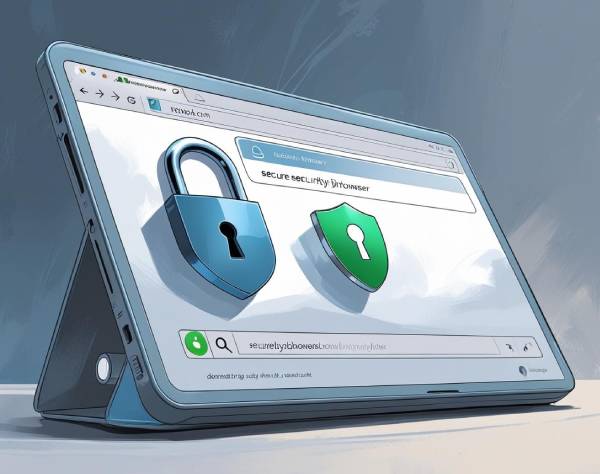To Pay or Not to Pay: Navigating the Ransomware Dilemma

The digital world has become a battleground in recent years, with ransomware attacks taking center stage. The years 2020 and 2021 saw a significant spike in ransomware attacks, partly fueled by the pandemic’s remote work culture, leaving businesses and individuals in a bind.
Fast forward to 2024, a glimmer of hope emerged with a 23% drop in ransomware attempts, partly due to the decline in the value of cryptocurrency (hackers’ preferred payment type). But the decision to pay a ransom or not continues to loom over the cyber landscape like an ominous cloud.
What Is the US Authorities’ Stance on Paying Ransom?
The guardians of the US’s cyber frontier, including the Cybersecurity and Infrastructure Security Agency (CISA), FBI, National Security Agency (NSA), and Multi-State Information Sharing and Analysis Center (MS-ISAC) stand firm against paying ransom. Their rationale is straightforward — “paying ransom will not ensure that all of your critical data is fully decrypted, that your systems or data will no longer be compromised, or that your data will not be leaked.”.
In 2021, President Biden signed the Executive Order on Improving the Nation’s Cybersecurity, aimed at improving national security. This order plans to modernize cybersecurity defenses through protected federal networks, improve public-private sector collaboration and information-sharing, and strengthen cyber incident response. It’s a robust legal framework designed to shield the economic and commercial interests from malicious cyber activities’ fallout.
The regulations include asset freezes and travel bans targeting individuals involved in harmful cyber activities. An asset freeze is exactly what it sounds like, which prohibits making funds or economic resources, including crypto assets, available, either directly or indirectly, to those identified as detrimental players (DPs).
In addition, the administration signed two cybersecurity bills into law in 2022, in a series of efforts to improve the nation’s cybersecurity, and in 2023 revealed the National Cybersecurity Strategy.
Reaching out to DriveSavers as soon as possible is vital for maximizing the chances of a successful data recovery, regardless of whether or not you’ve contacted the attacker yet. We offer a complimentary consultation to guide you through viable steps and explore alternative solutions that are cost-effective and save time. It’s important to realize that paying the ransom doesn’t guarantee that the victim will obtain the decryption key or recover access to their files.
Mike Cobb – Director of Engineering at DriveSavers Data Recovery
Should I Pay? Factors to Consider
When caught in a ransomware attack, every decision could have profound implications. The question comes up of whether to pay ransom money or not. It’s a precarious tightrope walk, where on one side lies the hefty cost of the ransom, and on the other, the criticality of the data that might be the lifeblood of your business operations or the privacy of your clients.
The antagonists in this digital drama, the ransomware groups, further muddy the waters. Their credibility, or the lack thereof, is a pivotal factor that could sway your decision. Are they known to keep their end of the bargain – decrypting the data once the ransom is paid? Or are they notorious for vanishing into the ether once the ransom money hits their cryptocurrency wallet?
There is also the fact that all Local and Federal governments have a stance against paying the ransom — technically, it is illegal to engage with the attacker — doing so could result in harsh penalties. Every state and U.S. territory has its own data breach reporting mandates and penalties. People living in or doing business in the United States must comply.
These aren’t just hypothetical scenarios but real-world dilemmas played out in the theater of ransomware attacks.
Alongside those considerations, there’s the beacon of hope that data recovery might be possible without paying ransom.
Related Reading: Bulletproof Your Backups
Each choice in this scenario has its own set of pros and cons. The stakes are high, given the repercussions are not just monetary and could have a domino effect on your reputation, customer trust, and, in some cases, the very survival of your business.
This backdrop sets the stage for a reactive response to ransomware attacks and a proactive, well-thought-out strategy to mitigate the risks and navigate the treacherous waters of the ransomware dilemma.
Knowledge is power, and professional guidance is the key. Understanding the intricacies of ransomware attacks, the MO of ransomware groups, and the options available for data recovery without paying the ransom can provide a semblance of control in a seemingly uncontrollable situation.
The expertise and advice of cybersecurity professionals and data recovery specialists could turn the tide in your favor, with your data integrity and business operations intact.

Preemptive Measures
Prevention is, of course, worth a pound of cure. Having a strong line of defense with secure data backups, robust incident response plans, and layers of security like email protection and 2-factor authentication to defend against phishing attacks can be your shield against ransomware tricks. Like having a spare tire in your car, being prepared can significantly reduce the impact of such cyber assaults.
A Note on Cyber Insurance
Cyber insurance has emerged as a buffer for organizations navigating cyber threats, particularly ransomware attacks. This form of insurance often covers the costs associated with such attacks, including the ransom amount demanded by malicious actors.
This financial cushion is a significant reason many organizations opt to pay the ransom, as the insurance alleviates the financial burden of the ransom payment. By covering the cost, cyber insurance enables businesses to restore their operations with lesser financial strain; deciding to pay the ransom is a more palatable option.
Nonetheless, while this insurance coverage provides a financial reprieve, it’s essential to note that it may also inadvertently perpetuate the cycle of ransomware attacks, as cybercriminals are emboldened with every successful ransom payment.
Financial Pragmatism
The financial dimensions of a ransomware attack are multifaceted. The cost analysis extends beyond the ransom amount to include the potential financial harm that could result from operational disruptions, legal liabilities, and reputational damage.
When the cost of recovering from the attack without paying the ransom skyrockets beyond the actual ransom demand, financial pragmatism might tilt the decision toward settling the ransom. It’s a grim calculus where the lesser financial setback might be chosen to mitigate larger monetary damage. In 2021, a report indicated that companies paying ransoms regained just 61% of their data, with just 4% recovering all of their data. Even after payment, there’s no certainty hackers won’t leak or sell what they’ve stolen.
Expert Guidance
Treading the perilous path of deciding whether to pay ransom requires professional input and expert guidance. The landscape of ransomware attacks is laden with pitfalls, legal ramifications, and technical intricacies that demand a seasoned understanding.
Engaging with data recovery specialists who can provide a well-informed perspective based on a thorough analysis of the ransomware strain, the credibility of the attackers, and the technical prospects of data recovery is vital.
Their expertise can illuminate the risks, potential outcomes, and legal landscape surrounding the decision to pay ransom, providing clarity in navigating the ominous terrain of ransomware.

When Not to Pay and Why
On the brighter side of the grim ransomware saga, encrypted data can often be recovered through alternative means, negating the need to pay ransom.
This could be through well-maintained backups, decryption tools released by cybersecurity firms or expert tools deployed by data recovery specialists that allow for data retrieval. When such alternatives are viable, withholding the ransom money becomes a pragmatic and advisable choice.
It’s like having a spare key when you’re locked out, rendering the locksmith’s service (or, in this case, the ransom payment) unnecessary. This route not only saves financial resources but also stands as a defiance against the malicious intent of ransomware attackers.
Response Strategy Post-Incident
In the aftermath, clear communication with stakeholders, thorough damage assessment, and consultation with experts are imperative. Whether you decide to pay the ransom or not, focusing on bolstering your cyber defenses for the future is paramount. It’s about learning from the skirmish and fortifying your digital fortress.
Useful Ransomware Links
Whether you are looking for further insights, guidance, or tools, these resources are a gateway to a wealth of knowledge awaiting your exploration.
Early Warning
This is a complimentary service from the NCSC, crafted to notify your organization of potential cyber threats on your network at the earliest. Early Warning harnesses a diverse array of information channels from the NCSC, plus reputable public, commercial, and exclusive sources, encompassing several feeds that are uniquely accessible here.
Exercise in a Box
A digital toolkit courtesy of the National Cyber Security Centre (NCSC), Exercise in a Box enables organizations to gauge their resilience against cyber attacks and hone their response strategies within a secure setting.
Cyber Incident Service
There’s also the Cyber Incident Service provided by the US government. Check out the guide Where to Report a Cyber Incident to find out who you should be alerting.
Ransomware Wrap-Up
Since ransomware hits many different types of organizations, the decision to pay can’t have a one-size-fits-all answer. In a perfect world, no one would pay the ransom. Paying ransom is simply making a space that welcomes criminals. But the truth for many organizations is that the services they offer are hugely affected every day they are shut down.
Navigating ransomware attacks is an ordeal. The decision to pay a ransom is complex and laden with financial, ethical, and legal quandaries. Professional intervention is often a beacon of hope amidst the chaos.
Companies like DriveSavers, with our expertise in data recovery, can be your ally when an attack happens, helping to traverse the ransomware dilemma with a fortified strategy.
In a world where cyber threats lurk around every digital corner, having a reliable and expert ally can make all the difference in safeguarding your precious digital assets.
Have you been hit with a ransomware attack?




